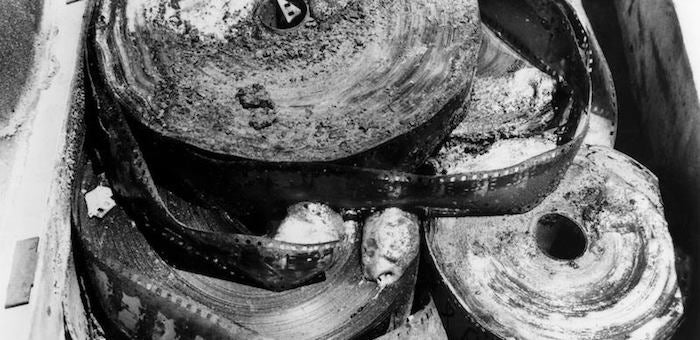
Deteriorating nitrate film
It is estimated that 50 percent of all films produced in the United States prior to 1950 have disappeared. 90 percent of classic film prints in the United States are currently in very poor condition. Similarly, much of historic television now exists only on obsolete and deteriorating tape formats.
UCLA Film & Television Archive is committed to preserving moving image materials. Until 1950, films were produced using nitrate cellulose film stock, a chemically unstable and flammable material that eventually deteriorates and turns to dust. After 1950, more stable acetate (or safety) film stock was used, but it also deteriorates, giving rise to "vinegar syndrome" or irreversible color fading. The Archive is increasingly relying on polyester film stock and digital means to preserve image and sound quality.
Part of the goal is to make a new print or prints so that they can be circulated and screened for the public at film festivals and screening venues around the world. But the ultimate goal is to make a new preprint element—a master positive copy or a dupe negative copy—on modern polyester film that research indicates will last for hundreds of years, and place it in our cold storage vault.
Film and television preservation and restoration is often labor intensive and can be costly. The exacting work requires researching the best surviving materials among the world's archives and private collectors, painstakingly comparing and cutting together shots and scenes from diverse sources, repairing splices and perforations, rerecording soundtracks to remove auditory imperfections, tinting silent films in their original colors and restoring faded prints.
With proper storage, film elements have the ability to survive, without deterioration, for hundreds of years.






 Mobile Navigation
Mobile Navigation
